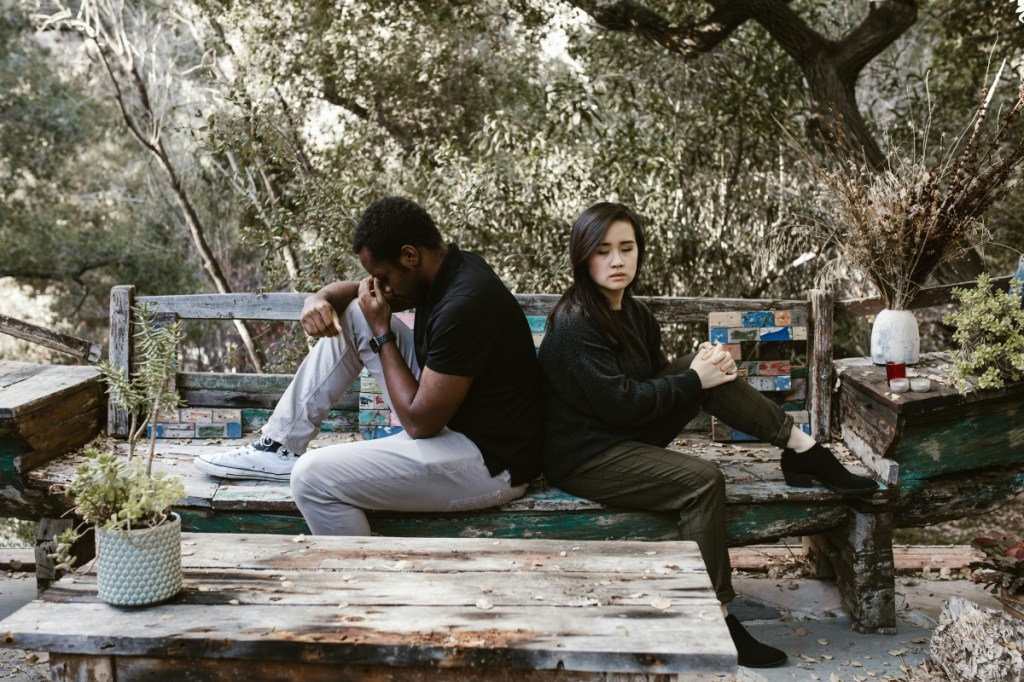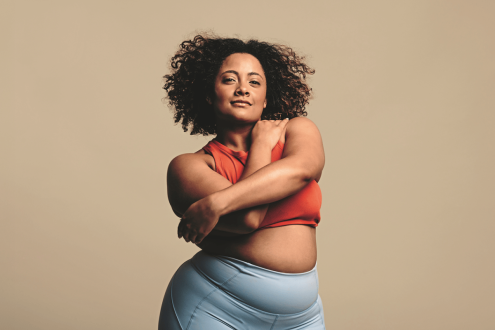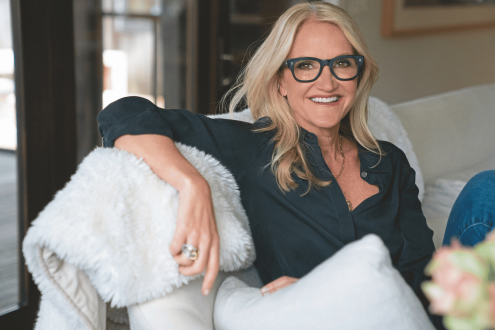Attachment style myths: what science really says
Are labels like ‘anxious’ and ‘avoidant’ being thrown around too much — by people who have no idea what they really mean? Expert Laura Mucha explains all.

It’s all over social media at the moment, but are labels like ‘anxious’ and ‘avoidant’ attachment styles being thrown around too much — by people who have no idea what they really mean? Expert Laura Mucha explains all.
Words: Laura Mucha. Images: Pexels
Attachment theory is the most significant theory of human relationships in the last century. It’s used by psychologists, psychotherapists, social workers, teachers, nurses, parents and more — and it’s probably all over your social media feed.
While many professionals know and use the word ‘attachment’, research suggests they don’t necessarily know that much about it — even when they’re claiming to base their work on it. And in popular writing, it’s usually oversimplified, or even incorrect. But when properly understood, attachment theory can help explain how and why we see things, pay attention, manage our emotions, remember, think and reflect when it comes to close relationships. In other words, it’s a game changer.
One of the most important ideas is that we’re all predisposed to turn to Someone Important when we’re hurt, worried, upset or scared. As a child, this might be a relative, teacher or neighbour. As an adult, this might be a family member, romantic partner or best friend. Ideally, this Important Person would be there for us when we need them. By ‘there for us’, I mean being available, willing and able to comfort and protect us. Then, when this happens over and over again, we start to trust that we have a safe haven when we need it. This is called ‘security’.
Once we have that trust, we can use that Important Person as a ‘secure base’ — we can venture off into the world to explore and learn, safe in the knowledge that if we need help, we’ll get it. But for some children, their experiences with Important People mean they don’t fully trust that they’ll have a safe haven when they need one. This is called ‘insecurity’. Around half of us are classified as insecure.

Insecurity can take different forms. You might try to hide your upset, hurt, worry or fear. You might try really hard to get your Important Person’s attention — and keep it. Or you might seem apprehensive around them. These ways of behaving might seem very different, but they may all reflect the same thing — not knowing whether Someone Important will be there for you (or to what degree).
Imagine you have a parent who gets annoyed if you hurt yourself or get upset. If you avoid asking for their help, you can also avoid being told off. And because you haven’t annoyed them, you can stay physically (albeit not emotionally) close. And that’s better than nothing.
That might be the best strategy for you as a child. But attachment patterns that we develop in childhood can stick around, and as an adult, it might create distance in your important relationships. And because it’s a pattern you learned in childhood, you might have no idea that you’re doing it — or why.
Understanding this can help you understand the way you and others think and behave, whether that’s working for you, and if you want change. Now you might be asking, what type of attachment do I have? There are two main ways of assessing attachment in adults. One is a quick, five-minute questionnaire that asks you to describe how you work in romantic relationships.
The other is a long, intense interview that’s designed to surprise the unconscious. Psychotherapists in the US sometimes use it to figure out their clients’ classifications. The researchers that use this interview use different words (‘preoccupied’ and ‘dismissive’), and they have different definitions.
People with a ‘preoccupied attachment’ pattern focus on Important Relationships. But instead of describing the good and bad in a balanced way, they often focus on the negatives. They often, but not always, had an ‘ambivalent/resistant’ relationship with Someone Important in childhood. This means that sometimes, when they needed help, they got it.
But sometimes they didn’t. They knew Someone Important would be there for them, they just didn’t know when. So, they focused on whether that person was available or not, and were angry if they weren’t.

Adults with a ‘dismissive attachment’ pattern focus their attention away from Important Relationships. They often describe idyllic upbringings, but don’t have the memories to back this up. They often, but not always, had an ‘avoidant’ relationship with Someone Important in childhood.
This means that when they asked for help, they didn’t get it — or worse, they were rejected or punished. So, they learned not to ask. Instead, they learned to distract themselves so that they didn’t feel upset in the first place.
Anxious and preoccupied, and avoidant and dismissive might sound similar. But they’re also very different… Of the seven people I interviewed and assessed for my new book, only one had the same attachment ‘pattern’ or ‘style’ in both assessments. And research tells a similar story — most people don’t have the same classification in both.
So you can be — and people often are — secure in one, and insecure in another. This makes talking about attachment theory in adulthood a bit tricky. But what all the different insecure patterns have in common is that you don’t know, believe, or feel Someone Important will be there for you when you need them.
So, what do you do if you think you’re insecure? Early researchers thought that attachment patterns were really stable, but more recent research has shown that they can and do change. Your attachment pattern isn’t something fixed, like your blood type. And no matter how difficult your childhood was, you’re not bound by it.
At the same time, childhood isn’t a blackboard that you can erase and write on again. Even if you do change, the shadows of earlier patterns can flare up in times of stress. And it’s precisely at times of stress that you want them to behave…

Amos, one of the people I interviewed for my book, was dismissive in the interview and secure in the questionnaire. He and his partner suffered the devastating loss of their child. He focused attention away from the relationship (and close friendships). He stopped seeing his therapist, withdrew from everyone important in his life and threw himself into work.
He defaulted to his dismissive pattern and it almost cost him his relationship. Thankfully, he managed to realise what was going on and change his behaviour. But that can be very hard to do in the middle of a crisis.
That’s partly why attachment theory is valuable — it helps us understand compulsive behaviours that can damage important relationships, and be unhelpful for our mental and physical health. So, yes, attachment theory is nuanced and there’s lots of misinformation out there. But it can also help us understand our own lives and the lives of others.
And you don’t need to become an expert in the theory to appreciate the fundamental premise: that humans need a safe haven from the cradle to the grave, whether that’s a parent, teacher, aunt, grandparent, neighbour, psychologist, partner or close friend. And when we believe that we have that, we’re free to explore and learn about the world.
And, no matter what our own attachment pattern might be, we can consciously try to provide a safe haven for others — and create safe havens for ourselves by choosing our Important People wisely.
The Insecure Type
If you’ve heard or read anything about the theory before, you’ve probably heard the words ‘anxious’ and ‘avoidant’. These are used by researchers to describe what they see as the two main types of insecure attachment.
Adults with an ‘anxious attachment style’ worry about how strong their relationships are or how long they will last. They often think about whether Important People are there for them or not and need their support more than people with other attachment styles. Their threshold for what they see as a crisis is lower.
Adults with an ‘avoidant attachment style’ believe that if they try to get close to someone, they’ll get rejected. They either worry about getting close, or are reluctant to depend on others/share information with them. This means they don’t ask for other people to be there for them as much – even in times of crisis.

Attachment Myths Busted
MYTH If you’re reading this and thinking ‘I’m definitely secure’ – don’t be so sure…
TRUTH People with a ‘dismissive’ attachment pattern often describe idyllic childhoods, but can’t back this up with specific memories of important relationships.
MYTH You can do a quick quiz online and understand everything about you and your relationships.
TRUTH Many online articles and quizzes are oversimplistic and not scientific, so don’t rely on them.
MYTH Insecure attachment patterns are bad.
TRUTH They’re often the best strategy we had as children given the circumstances we were born into.
MYTH I’m insecure now, I’m insecure forever.
TRUTH Research shows you can change your attachment pattern if you want to (but that doesn’t mean it’s easy…).
MYTH Insecure attachment is the fault of the parent(s).
TRUTH You can’t understand a parent without understanding their context. It’s much harder to provide secure attachment if you don’t have support and are living in poverty/with mental or physical illness/are overwhelmed.
MYTH Finding a partner with a secure attachment pattern will fix my problems.
TRUTH It might help (if you don’t break up with them first), because when they’re there for you on repeat, you’ll hopefully learn to readjust your expectations of Important People. But putting it all on your partner relinquishes responsibility.
MYTH Being too loving can spoil a child.
TRUTH By being there for a child when they need you and being sensitive to their needs, you’re not spoiling them. You’re helping them learn that they have a safe haven when they need one, and a secure base from which to explore, and this can help them have better mental and physical health as they get older.
Laura Mucha is an ex-lawyer turned award-winning poet and author. She is author-in -residence at the Department of Public Health and Primary Care, University of Cambridge. lauramucha.com









